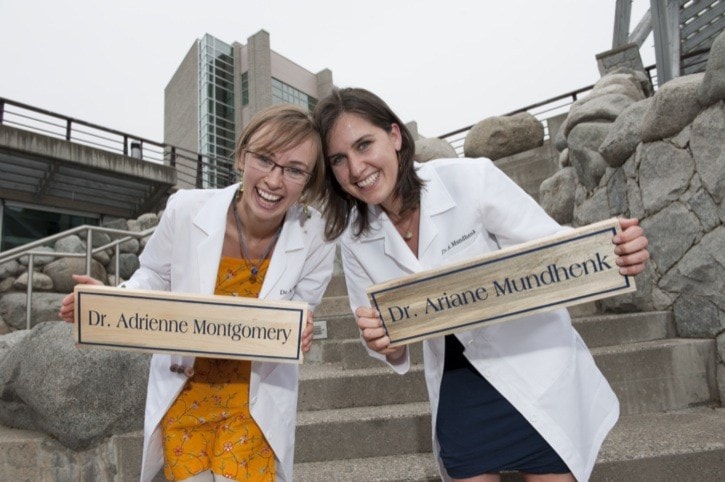A program intended to retain physicians in the north seems to have worked for one new doctor who started practicing in Terrace at the beginning of this year.
Ariane Mundhenk is a graduate of the Northern Medical Program and also completed her residency here before entering into work at the practice of an established family doctor.
Her path was made possible with the help of government investment which expanded medical school training in the province to the University of Northern British Columbia in Prince George in an effort to encourage more young physicians to stay rural.
But since the program’s inauguration, there has been criticism that northern communities have not yet retained the numbers of physicians originally forecasted.
According to associate vice-president Dr. Paul Winwood, it’s still too early to come to any conclusions about where the students have landed.
“From the time that they enter medical school to the time that they actually settle into practice is, on average, anywhere between 11 and 15 years,” he said. “And that means the majority of our graduates have not yet settled into practice.”
The university concluded that currently around 30 percent of graduates from their program have settled into permanent practice in the north.
However, more than two-thirds are said to have ended up in rural communities province-wide.
“Our emphasis is to train people to work in rural areas, but of course they are not restricted to the north and there are physician shortages across the province,” Winwood noted.
Research shows that training students in the north will make them more likely to stay there and recruiting students from rural areas means an increased chance they will work in those areas, he said.
Students who spend their first two years in the program have the option of taking their third year in either Terrace or Fort St. John, gaining rural experience as an alternative to the traditional training.
Once they have graduated, they can apply to either location again for their residency.
This year two students are in Terrace as well as five residents who are partnering with local physicians for training.
For Ariane Mundhenk, she is now calling Terrace home after living here during her residency and says that the opportunities have created the work-life balance she was looking for.
“I feel very fortunate because I’m working with a lot of the people that I trained with so they’re still providing a lot of support that way,” she said.
Though she grew up in the Lower Mainland, Mundhenk says that she was always interested in rural medicine and found the Terrace community very accommodating to her need to work part-time after becoming a parent.
The love for the outdoors shared by her and her partner were also deciding factors, she said.
Terrace’s residency program is still young, having only started in 2008, four years after the province first injected millions into expanding UBC’s medical program to UNBC and the north.
The Northern Medical Program has since graduated more than 200 students and accepts 32 new ones each year.
Over half of those students end up in family practice, the university states.
“I think we’re doing well, what I see anecdotally and hear from our students is that a good number want to work rural,” said Winwood. “We are seeing encouraging signs both for the north and for rural in general.
“Can we do more? We can always do more,” he said.
Though the province already provides students with a number of financial incentives to take training opportunities in northern communities, Winwood also thinks that the bursary program the university is starting will allow for more rural students to enter the program.
He says that the opportunities to train in Terrace are unique compared to those available in larger training centres.
The students rotate through areas such as psychiatry, obstetrics, and internal medicine while visiting a family physician’s office and taking an emergency room shift each week.
“They get to see everything and anything all in a jumbled up order throughout the year and by the time they end the year they have seen everything they need to see,” Winwood said.
All this leads to better training which more accurately mimics reality, he said.
Mundhenk said that she rotated through the offices of nearly all the physicians and specialists in town during her time here.
Though she is filling in for a physician in Fort St. John this month, she will be back to her regular work at the Terrace medical clinic for the rest of the summer.
“It’s been a great experience, there’s really interesting medicine here,” she said. “We see a huge breadth of medicine and because we have specialist back-up here we’re able to manage a very high acuity of patients, you’re able to work closely with specialists,” she said. “It’s been a nice transition; I don’t see us moving back to the city.”
